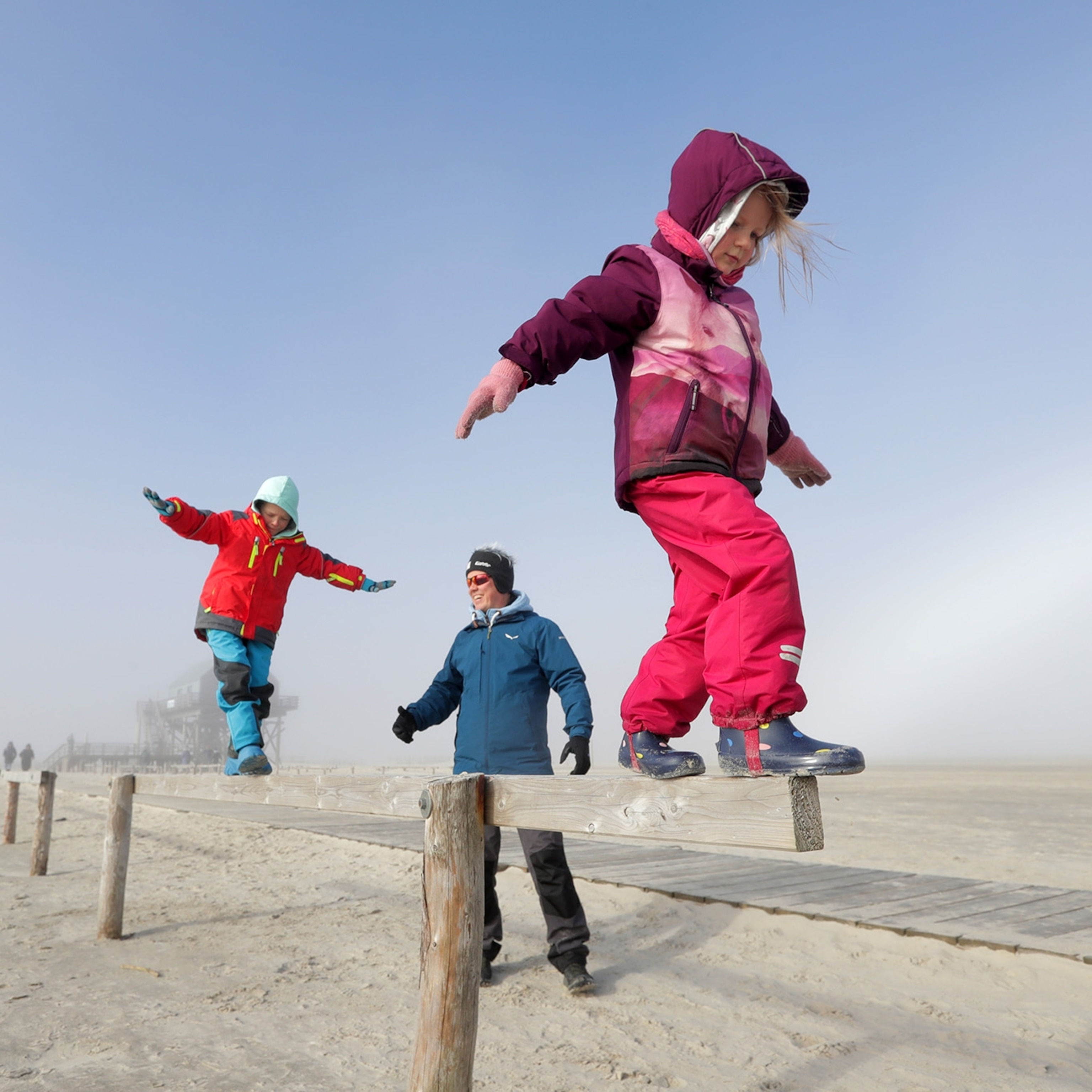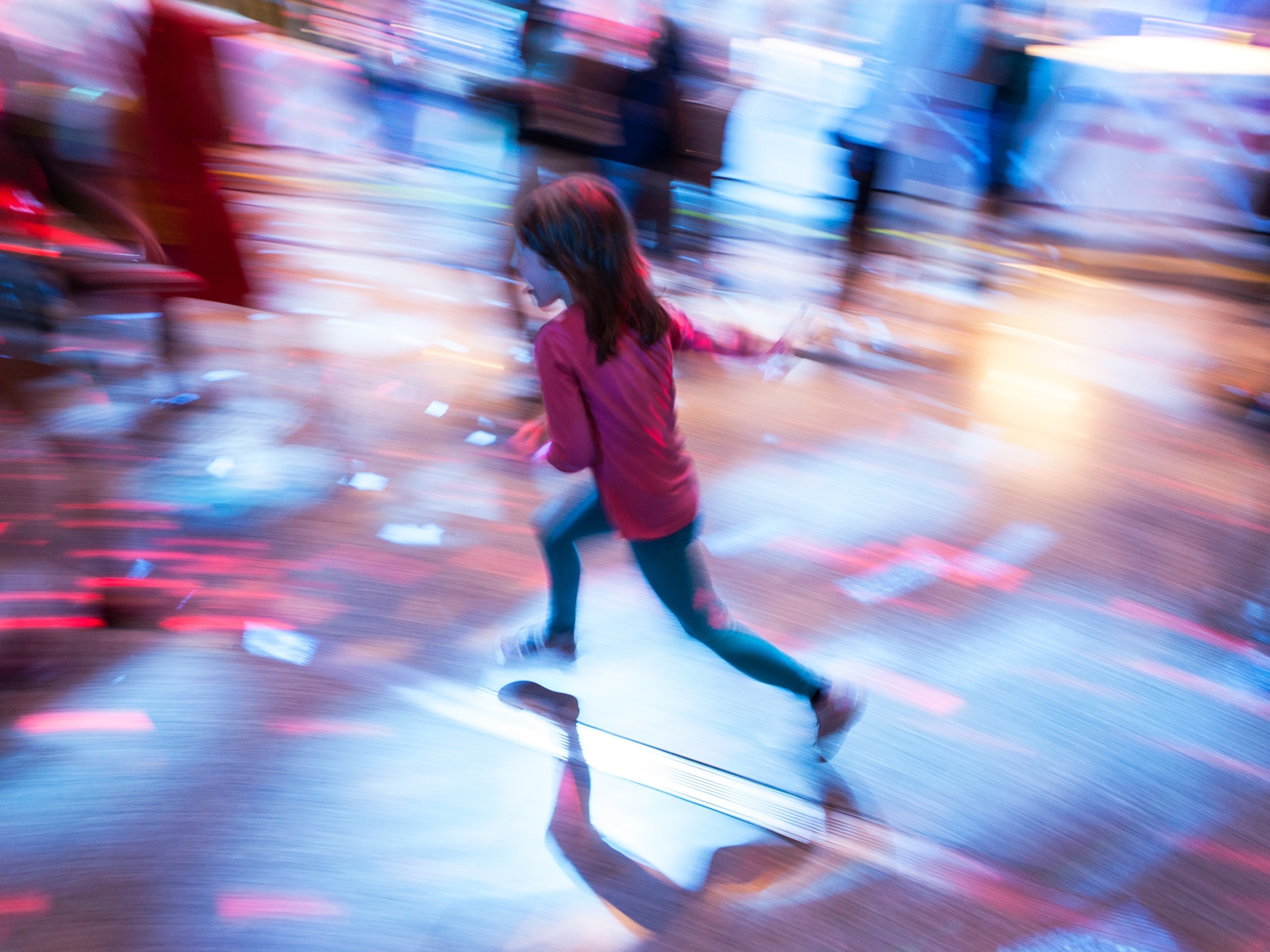Nearsightedness is skyrocketing in kids. Sunshine can help.
Rates of nearsightedness, or myopia, are skyrocketing in kids—and scientists say it has to do with how little time they’re spending outdoors. Here’s why it’s so good for your vision.

There’s a new public health epidemic looming on the horizon: Rates of nearsightedness, also known as myopia, are increasing at alarming speed. The American Optometric Association estimates that myopia diagnoses have climbed more than 25 percent in the past 40 years—and the National Eye Institute projects that by 2050, close to half the world's population will be nearsighted.
The rise is dramatic enough "it has caused the term 'myopia epidemic' to be used to describe the phenomenon," says Marc Mathias, an associate professor of ophthalmology at the University of Colorado School of Medicine.
(Why are so many children being diagnosed with myopia?)
Children have been particularly affected by the rise in myopia—and scientists think there may be a surprising connection with how little time they are spending outside. One survey shows that in 2022, only 27 percent of children were regularly playing outside compared to the 80 percent of adolescents who were two generations ago.
Because of this, a 2024 National Academies report addressing the causes and prevention of myopia recommends for parents to get their kids outside more to better protect their eyesight.
"Our report reaffirms what has been in the scientific literature for over 15 years: that increased childhood outdoor time appears to be protective for myopia onset and development," says Terri Young, a co-author of the report and a pediatric ophthalmologist and chair of the University of Wisconsin department of ophthalmology and visual sciences.
Here's why sunlight and spending time in nature is so good for eye health—plus how much time outside is needed to reap benefits.
What is myopia and why is it worrisome?
Myopia occurs when the shape of the eye becomes elongated, causing distant objects to appear blurry while close objects remain clear. When the eye is elongated, the retina—the tissue that lines the eye and ultimately translates light signals into vision—has to “stretch” to cover it, explains Sara Weidmayer, a practicing Doctor of Optometry in the VA Ann Arbor Healthcare System in Michigan.
When this elongation occurs, it cannot be reversed and the reduced vision can affect day-to-day life, work and school performance, driving safety, confidence levels, and athletic performance. While eyeglasses or contact lenses are often prescribed, myopia isn't only a matter of inconvenience.
(This rare disorder is a leading cause of blindness in young people.)
"When you have elongated eyes, the stretched structures inside are at a much higher risk for many ocular health conditions—some of which can permanently reduce vision and, in some cases, cause vision loss and blindness," says Laura Di Meglio, an instructor of ophthalmology at the Wilmer Ophthalmological Institute at Johns Hopkins University School of Medicine.
Some such worrisome eye conditions include glaucoma, premature cataracts, macular degeneration, and retinal tears and detachments.
Why sunlight is good for eye health
Playing outside and being in the sun improves eye health for everyone, but especially does so for kids. "For younger children whose eyes are still developing, spending time outdoors helps prevent excessive elongation of the eyeball," says Chase Ludwig, a vitreoretinal surgeon at the Byers Eye Institute at Stanford University School of Medicine.
This is primarily because bright sunlight triggers the release of a neurotransmitter found in the brain and retina called dopamine, which, he says, "regulates eye growth and ensures the retina maintains its proper shape."
Dopamine also helps the eye adapt to different light conditions by regulating how images interact with specific receptors in the retina, adds Inna Lazar, an optometrist practicing in Darien, Connecticut—an interaction that further improves the shape and health of the eye.
(4 ways to get more 'nature therapy' into your kid's schedule.)
Another benefit of sunlight is that it supports vitamin D production, "which can strengthen ocular tissues," says Isdin Oke, an ophthalmologist at Boston Children's Hospital and an instructor of ophthalmology at Harvard Medical School. He says it does this, in part, by reducing eye inflammation, improving corneal function, and helping with tear secretion. Di Meglio adds that vitamin D also strengthens the outer layer of the eye known as the sclera, "which helps prevent stretching or thinning."
Aside from its effect on nearsightedness, "vitamin D is also thought to play a role in preventing or improving other eye conditions such as age-related macular degeneration, diabetic retinopathy, dry eye disease, and uveitis due to its anti-inflammatory and anti-oxidative properties," says Jacqueline Nguyen, a clinical assistant professor at the University of Michigan Kellogg Eye Center.
Such reasons are why multiple studies show that regular outdoor exposure is associated with lower rates of myopia in children.
Other factors playing a part in myopia rates
But it’s not just sunlight that keeps your eyes healthy—being outside and away from additional factors that harm your vision can play a role too.
For instance, research shows that the time we spend with our eyes glued to screens also plays a role in the myopia epidemic, says Mathias.
One reason for this is that screens and close-up activities don’t give our eyes opportunities to strengthen long-distance sightseeing muscles—and engaging in such activites for prolonged periods "appear[s] to trigger the eye to elongate in an effort to lessen the accommodative demand that it takes to see clearly up close," says Weidmayer.
It’s an especially important risk factor for eyes that are young and developing, she adds.
This, combined with less-studied concerns related to the blue light emissions of screens, are among the reasons the World Health Organization has suggested that children under two have no screen time at all and for children ages two to five to limit their screen use to no more than one hour per day.
"Beyond age five, continuing to limit screen time remains important for young children and adolescents with developing eyes," adds Mathias.
Beyond screen use and excessive up-close activities, some people also attribute rising myopia rates to genetic predispositions, "but these account for less than 10 percent of myopia variability, as shown in genome-wide association studies," says Ludwig.
What can be done to reduce myopia risk?
Such considerations are among the reasons the National Academies of Sciences, Engineering and Medicine's recent consensus study report encourages "increased outdoor time during daylight for young children and persistent outdoor activity throughout childhood and into young adulthood."
The amount of time suggested by the report and supported by additional research "is at least one hour of daily outdoor activity," says Oke. Indeed, a meta-analysis found that spending an hour a day outside results in a 45 percent reduction in myopia incidence while 76 minutes of outdoor activity daily equals a 50 percent reduction risk.
It's also important to stay on top of eye exams—especially for children. "Most young children in America are not receiving eye care," says Weidmayer, who notes that less than 15 percent of preschoolers receive an annual eye exam. "When myopia starts early in children, it is more likely to progress, and progressive myopia is a very real public health concern," she cautions.
For children and adults alike, Ludwig advises taking breaks when reading, looking at screens, or engaging in tasks that require doing prolonged up-close work.
"Follow the 20-20-20 rule," he suggests, which states that for every 20 minutes of screen-based or other up-close activity, you should look at something 20 feet away for at least 20 seconds. "Following this one tip can significantly reduce eye strain," he says. Ditto for ensuring that reading and up-close activity spaces are well-lit and "maintaining a healthy distance of at least one arm's length from screens."
While Di Meglio says that increasing the amount of time spent outdoors and following such strategies won’t guarantee long-term eye health, "any amount of myopia that can be prevented can help reduce the chances of complications and possible vision loss later in life."








